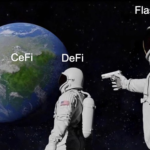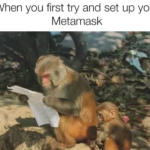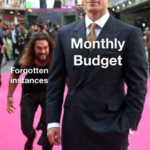
Hey, what’s up football fans? Are you interested in learning about Solidity and how to create, transfer, and interact with ERC20 and ERC721 tokens?
Well, look no further because we’re about to dive into the world of Ethereum smart contracts and how they can be used.
First, let’s start with the basics. Solidity is a programming language used to write smart contracts on the Ethereum blockchain.
ERC20 and ERC721 are two of the most popular token standards used on the Ethereum blockchain.
ERC20
ERC20 tokens are fungible tokens that can be used as digital currency.
To create an ERC20 token, you would need to write a smart contract that defines the token’s name, symbol, decimal places, and total supply.
Here’s an example:
pragma solidity ^0.8.0;
contract LFCoin {
// Declaring variables for name, symbol, decimals and total supply of the token
string public name = "LFCoin";
string public symbol = "LFC";
uint8 public decimals = 18;
uint256 public totalSupply;
// Mapping to keep track of the token balance for each account
mapping(address => uint256) public balanceOf;
// Constructor function that initializes the total supply of tokens and assigns them to the creator's account
constructor(uint256 _initialSupply) {
totalSupply = _initialSupply;
balanceOf[msg.sender] = _initialSupply;
}
// Function to transfer tokens from the sender's account to the recipient's account
function transfer(address _to, uint256 _value) public returns (bool success) {
// Ensure that the sender has sufficient balance to transfer
require(balanceOf[msg.sender] >= _value);
// Subtract the transferred tokens from the sender's account
balanceOf[msg.sender] -= _value;
// Add the transferred tokens to the recipient's account
balanceOf[_to] += _value;
// Return true if the transfer is successful
return true;
}
}
In this example, we’re creating a new contract called LFCoin that inherits from the ERC20 standard.
We’re setting the token name to “LFCoin,” the symbol to “LFC,” and the decimal places to 18.
We’re also creating a mapping that associates each address with its corresponding token balance.
We’re then defining a constructor that initializes the total supply and assigns it to the contract creator.
Finally, we’re defining a transfer function that allows users to transfer tokens from one address to another.
ERC721
ERC721 tokens are non-fungible tokens that represent unique assets such as collectibles, artwork, and in our case, Liverpool FC memorabilia.
To create an ERC721 token, you would need to write a smart contract that defines the token’s name, symbol, and metadata.
Here’s an example:
pragma solidity ^0.8.0;
// Importing OpenZeppelin ERC721 contract implementation
import "@openzeppelin/contracts/token/ERC721/ERC721.sol";
// Contract definition
contract LFCMemorabilia is ERC721 {
// State variables
uint256 public tokenId;
string public tokenURI;
// Constructor
constructor(string memory _tokenURI) ERC721("LFCMemorabilia", "LFCM") {
tokenId = 1;
tokenURI = _tokenURI;
_mint(msg.sender, tokenId); // Minting NFT
}
}
In this example, we’re importing the ERC721 contract from the OpenZeppelin library.
We’re then creating a new contract called LFCMemorabilia that inherits from ERC721.
We’re setting the token ID to 1 and the token URI to the URL of the asset we want to represent with the ERC721 token.
Finally, we’re calling the _mint function to mint the token and assign it to the contract creator.
Once the tokens are created, they can be transferred and interacted with by other users.
As a Liverpool fan, you could create an ERC20 token called LFCoin and use it to buy and sell Liverpool FC merchandise.
You could also create an ERC721 token called LFCMemorabilia that represents a unique piece of Liverpool FC history and sell it on NFT marketplaces such as OpenSea.
Conclusion
With Solidity, you can create and interact with digital tokens that can represent either fungible or non-fungible assets.
The possibilities for using tokens and smart contracts in the world of sports and beyond are endless, and it’s exciting to see how this technology will continue to evolve in the future.
Peace out!







